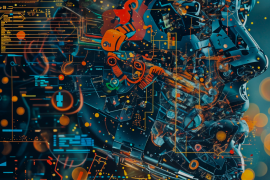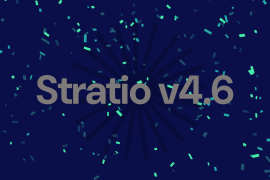Stratio’s Proof of Concept (POC) process, the set of OKRs which are agreed before any project starts, and the scaling framework provide our customers with a seamless and successful experience.
In this article, we explore the importance of Objectives and Key Results (OKRs) as the foundation of our customer collaboration. By agreeing on OKRs upfront, we ensure clear project goals, active customer involvement, and a customer-centric approach.
We also discuss the evolution of OKRs throughout the POC process and highlight Stratio’s Scaling Framework for customer growth and long-term success. Our focus is on customer-centric benefits, guarantees of success, and tailored partnerships.
The Proof of Concept (POC) process
The Proof of Concept (POC) process is a crucial stage in our customer experience at Stratio. It allows us to demonstrate the value and feasibility of our proposed solution to the client, building trust and aligning expectations before proceeding. The POC process involves collaboration between our sales, pre-sales, technical, industry experts, and service delivery teams.
1. Initial engagement with the client and OKR formulation
At Stratio, we prioritise the initial engagement with our clients to gain a deep understanding of their needs and requirements.
Once we establish a deal and prepare a proposal, we formulate the Objectives and Key Results (OKRs). While the salesperson creates the initial version of the OKRs, we recognise that their perspective alone may not encompass all the necessary technical insights.
To ensure the highest quality and effectiveness, we actively involve the pre-sales team and the industry experts with domain expertise in relevant verticals such as finance, retail, and the public sector. This collaborative effort allows us to refine the OKRs and suggest the best solutions to our customers’ specific problems.
2. Involvement of delivery team and OKR alignment
Once we formulate the initial Objectives and Key Results (OKRs), we also involve the delivery team and our technical experts. This collaborative approach brings together a diverse range of perspectives, ensuring viability and clarity from both technical and industry perspectives.
During this phase, our teams work closely to review and align the proposed OKRs with our delivery capabilities for a seamless and successful outcome.
3. Refinement of OKRs and final proposal
As we reach the service delivery stage, our dedicated technical lead, delivery team, and industry experts come together to refine the OKRs, resulting in what we call ‘the last version’. These refined OKRs, along with associated risks, lay the foundation for our final proposal.
At Stratio, we recognise the importance of striking a balance between the sales team’s objective of creating attractive OKRs and the delivery team’s commitment to ensuring absolute clarity in what we will achieve. This unique approach sets us apart and enables us to consistently meet and exceed our customers’ expectations.
4. Explanation of OKRs to the client
We believe in open communication and prioritizing alignment with our clients. Our salesperson, alongside the service delivery team, takes the time to explain the objectives and key results (OKRs) in a language that resonates with you, discussing your goals, requirements, and aspirations. This approach is valuable if you are unfamiliar with OKRs.
At Stratio, our goal is to ensure that you have a thorough understanding of the project goals and the proposed solution. By establishing this clarity, we lay a solid foundation for a successful collaboration that drives meaningful outcomes.
How does a Stratio OKR look like? – Example
Objective – Enable the financial area, through governed and secured data, to improve decision making.
- KR1: Information from the different channels and the results of AI models are visualised in business dashboards on Stratio Discovery.
- KR2: AI models are based on governed data endowed with semantic meaning, quality and security according to the regulation to improve the capacity to obtain insights.
- KR3: Compliance with the security regulations and GDPR in force in each country is guaranteed for the exploitation of data.
- KR4: Generative AI use is integrated in data consumption oriented to the business areas to allow KPIs obtention through natural language use.

Stratio’s scaling framework
Stratio’s scaling framework is a collaborative and transparent approach that enables us to align all company resources, including technical, industry, and commercial perspectives to provide the best solutions to our customers.
By emphasising the interactions between different teams and areas, we strive to create a cohesive and productive working environment while effectively managing our continuous growth. This framework facilitates optimal resource utilisation and ensures that our customers receive tailored solutions that meet their specific needs.
Benefits of Stratio’s scaling framework
Our framework benefits customers in all senses and provides a strong foundation for addressing their evolving needs:
- Enhanced agility and flexibility: By embracing a collaborative and empathetic approach, we can quickly respond to customer requests and adapt to market dynamics. Our scalable framework allows for seamless expansion and adjustments, empowering our customers to stay agile and seize new opportunities.
- Increased efficiency and productivity: Through the utilisation of resources like OKRs, prioritisation matrices, and increments plans, we ensure that our work is closely aligned with strategic objectives and priorities. This alignment streamlines workflows, minimises inefficiencies, and optimises resource utilisation, enabling our customers to achieve their goals efficiently.
- Improved customer satisfaction and long-term value realisation: Our framework fosters effective communication and collaboration among diverse teams, ensuring accurate understanding and fulfillment of customer requirements. By delivering tailored solutions and maintaining a strong focus on customer satisfaction, Stratio enables our clients to derive long-term value from their investments, fostering strong and enduring partnerships.
Key elements and principles
Stratio’s scaling framework is built upon three fundamental pillars and aims to foster collaboration, understanding, and high-quality work. These include:
- Empathy: By deeply understanding and considering the perspectives and needs of different teams within our organisation, we foster a cohesive working environment, reducing conflicts and enabling effective collaboration.
- Transparency: We promote shared understanding and clarity through artifacts like OKRs, prioritisation matrices, and risk matrices. These tools ensure accessible and visible information, facilitating better decision-making and alignment with our customers.
- Scalability: Our framework places a strong emphasis on scalability to support both our company’s growth and the evolving needs of our customers. By aligning proposals and actions across different areas, we minimise project execution risks and leverage the expertise of our chapters and product development team.

Transform your data landscape with Stratio’s customer-centric approach
Ready to experience the power of Stratio? Our customer-centric approach, combined with our proven Proof of Concept (POc) process and scaling framework, ensures that you receive tailored solutions and guarantees of success. Contact us today and start transforming your data landscape.
More information here




